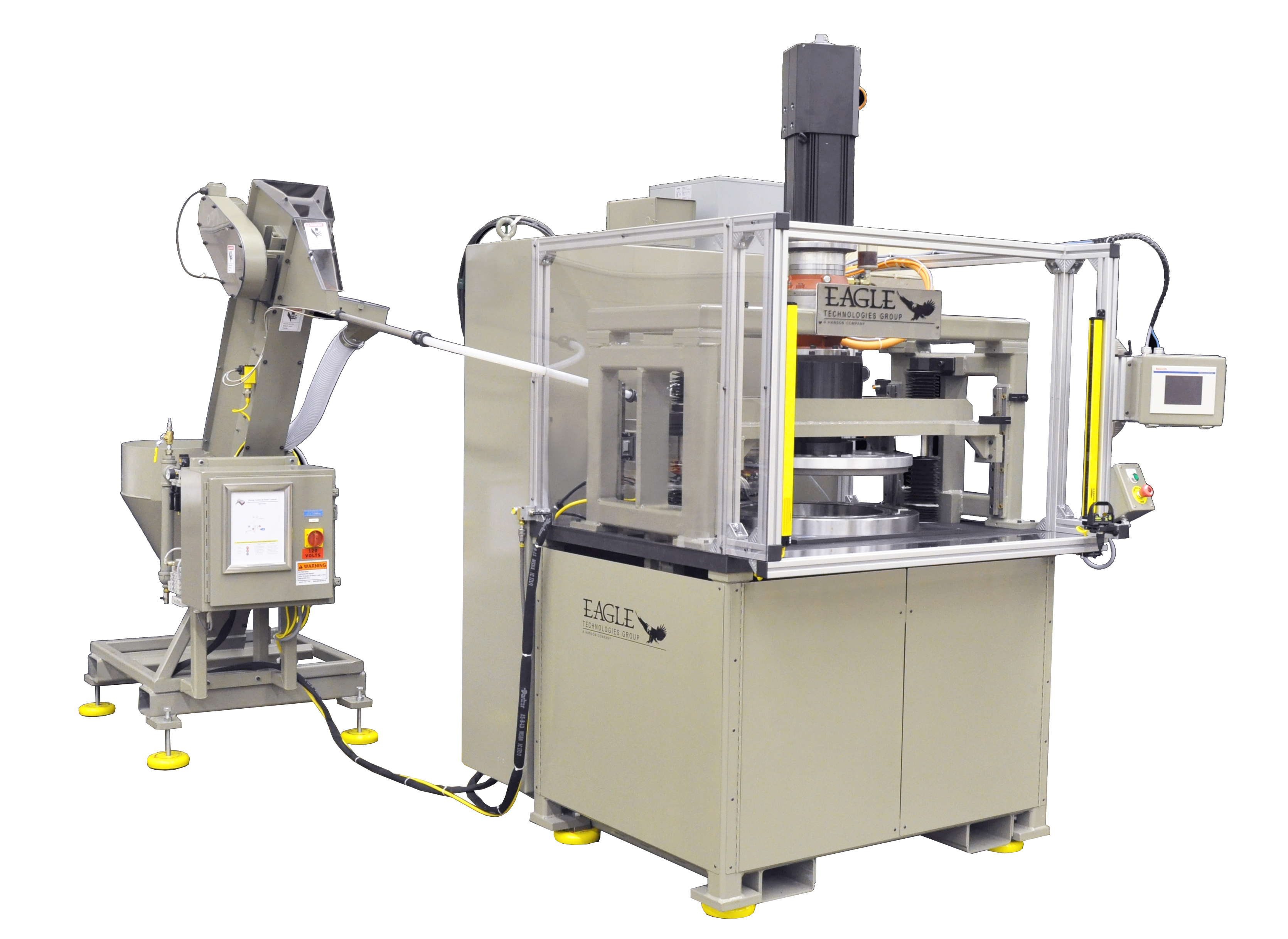Friction welding is a versatile material joining method with numerous benefits.
One of the most satisfying parts of designing an assembly process is determining which technologies are most suitable for a particular process. In some cases, the assembly method is an obvious solution that has been used for years. But every now and then, a novel technique emerges that brings with it a set of advantages and applications that provide a new range of possibilities for manufacturers.
Friction welding is just such a technology. Not only does it solve several manufacturing challenges that would be difficult or impossible to handle in other ways, it does so cleanly and efficiently. In other words, it is an elegant solution to previously intractable problems.
Friction welding is a solid-state process by which binds two materials below their melting point using only the heat generated by the friction between those two parts. While one component is held firmly in place, the other moves at high speed—either rotationally, as in spin welding, or from side to side, as in linear welding. The components are then pressed together, with the friction generated by the moving component heating both pieces until the weld is formed.
The result is an incredibly strong bond that is ideal for a number of applications.
1. Welds form in a matter of seconds.
First of all, friction welding is very fast. Once the rotating side reaches the speed needed to form the weld, the joining itself takes only a couple seconds. This makes friction welding incredibly efficient, as the main time considerations are loading the materials and bringing them up to speed.
2. Dissimilar metals may be joined.
Perhaps the greatest advantage to friction welding is that materials which are difficult or impossible to weld by traditional means can be joined using this method. For instance, the difference in melting points between aluminum and steel, or between copper and aluminum, make traditional welding difficult.
Other examples of dissimilar friction welds include:
- Titanium to copper
- Copper to aluminum
- Aluminum to steel
- Copper to steel
- Steel to nickel alloy
- Thermoplastics to metals
Joining dissimilar metals removes limitations for engineers and allows them to choose the material best suited for their purpose, which is essential for some major use cases.
Use cases for friction and spin welding include:
- Copper and aluminum for electrical components.
- Light-weight aluminum with high-strength steel for aerospace.
- Copper with steel for reactor cooling systems.
- Plastics to metals, as might be used to join eyeglass hinges.
3. Friction is self-cleaning, requiring less material preparation.
In traditional welding, the introduction of surface contaminants, such as oils, rust, or mill scale, into the weld can weaken the joint. Because of this, manufacturers have had to factor preparation time into their operations. However, in a friction welding, the movement of the components against each other at high speed is enough to clean the parts, meaning no additional surface preparation is required.
4. No additional filler agents needed.
Traditional welding not only requires surface preparation, it also relies on filler metals and deoxidizers to form tight bonds. But because friction welds are formed from the heat of the two components under pressure, no filler metals or deoxidizers are required. The result is a fully-bonded joint without any gaps or voids between components.
5. Safe and eco-friendly due to lack of gases and fumes.
The lack of filling agents and external heat has another significant advantage: no need for gases or fume-producing equipment. In eliminating fuels, cleaning solutions, filling agents, and deoxidizers from the process, businesses save on costs while also producing a more ecologically friendly joining process.
6. Produces full-strength bonds without adding weight.
The added weight of external fasteners can be a significant engineering problem, especially in scenarios where excess weight or aerodynamic drag must be eliminated wherever possible. This is especially important in aerospace and automotive applications—both industries that seek to optimize strength and durability while simultaneously moving toward light-weight materials and joining techniques. Friction welding forms exceptionally strong bonds without adding the weight of any fastening materials.
7. Direct heat means only a small portion of the surface area is affected.
Finally, because heat is generated by the movement of the components themselves, and no other external heats are applied, the affected area is very limited. Engineers don’t have to worry about heat affecting other portions of the assembly.
Selecting the right material joining technology for your assembly is crucial.
Every assembly stage requires its own solution. While friction welding is an ideal solution for joining materials that have similar cross-sections, where one side can be fixed in place while the other is rotated, this process is not possible for welding joints where that kind of high-speed movement is unfeasible. Friction welding also usually requires each component to be a certain thickness, and may not work for materials that are too fine.
Fortunately, this is where other material joining technologies come into play. Traditional welding is an ideal solution for joining smaller components onto a larger piece that is difficult to move, while laser welding can join metals with precision, even in difficult-to-reach areas. Swaging can fit pieces together without binding them permanently into place, and fasteners, such as screws and rivets, can join dissimilar components when other options fail.
No matter your assembly, our expertise means we can choose the right material joining process to fit your need. Contact us today to learn more about our processes and partners in welding.
![]() Brandon Fuller, Eagle Technologies
Brandon Fuller, Eagle Technologies
Eagle Technologies, headquarters in Bridgman, MI
Eagle builds the machines that automate manufacturing. From high-tech robotics to advanced product testing capabilities, Eagle offers end-to-end manufacturing solutions for every industry.


